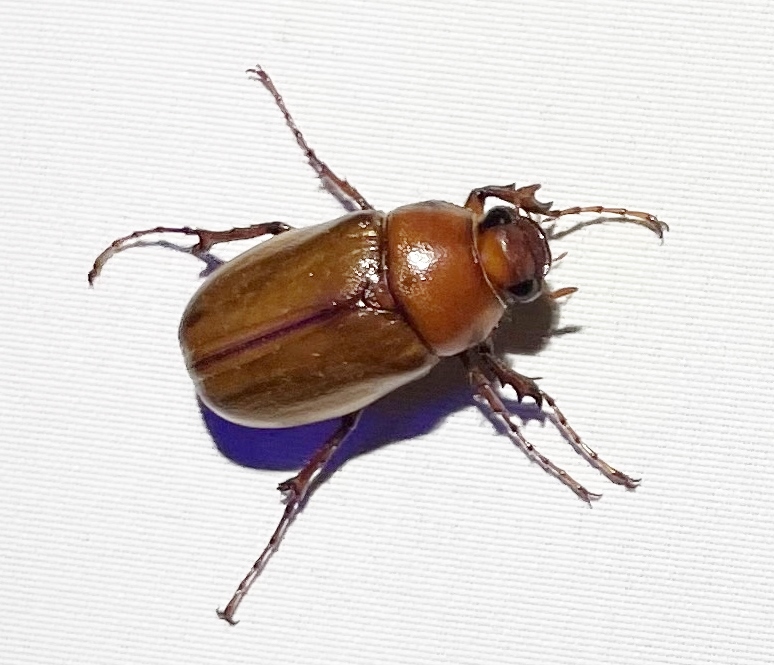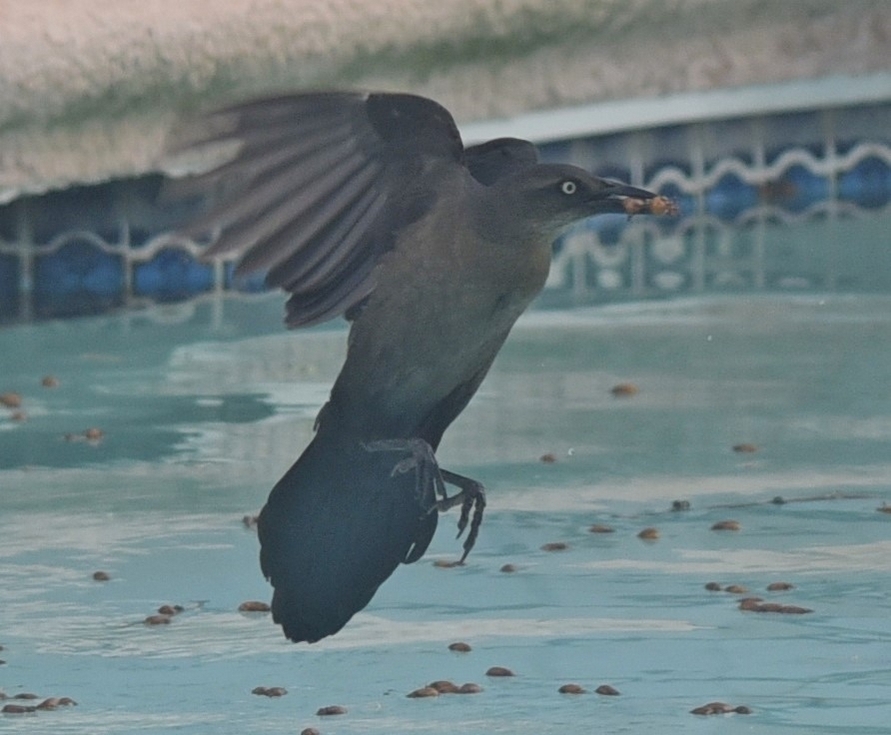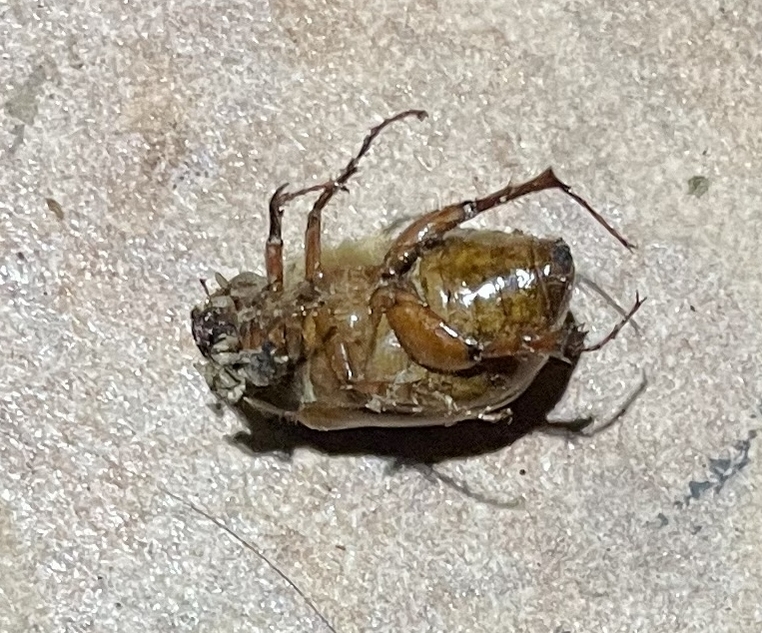Growing up in Kansas, it was kind of fun to see a couple of June bugs bumping against the porch light in the evenings. I knew they wouldn’t hurt me, because my momma said so, and with the arrival of June bugs, I knew summer — and my birthday month — had definitely arrived.

As an adult now, living in Texas and having access to a computer, the World Wide Web, research skills and a Texas Master Naturalist education, I know that June bugs are actually beetles in the scarab family and the Phyllophaga genus.
With a modicum of research, I’ve found that the beetles are still harmless to humans, but I’ve not yet found why they have come in in droves, like seventeen-year periodical cicadas, only quieter.
The beetles, which vary in size and color from one-half to five-eighths inches long and from reddish-brown to almost black, they have three pairs of legs, one on each of the first three segments behind the head. There are more than 100 species of scarab beetles from several genera, (for example, Cyclocephala, Phyllophaga and others), in Texas that are considered to be white grubs, May beetles and June bugs. The most common is Phyllophaga crinite, according to texasinsects.tamu.edu.
Species differ in distribution, habitat preference, length of life cycle and seasonal occurrence, but their biologies are similar. Other common species include the southern masked chafer (Cyclocephala immaculate) and the green June beetle (Cotinis nitida).
Currently, I have the opportunity to study hundreds of these beetles every morning. I’ve put my moth sheet and black light set up on the porch while it has been raining. For the past week, hundreds of June beetles have adorned the moth sheet, landed belly-up behind the sheet frame, on the deck and in the corners of the porch. Although June beetles are nocturnal creatures, they are attracted to light; they don’t really survive all that much absorption of light, hence so many on the tile each morning.

June beetles cannot apparently survive extended periods of chlorine exposure either, as attested to the 300 or more discovered floating in the swimming pool in the mornings. It’s not all without its fun element. Great Kiskadees, grackles and kingbirds provide morning and evening entertainment as they swoop down, skim the water and land poolside with a June bug in their beak. In addition, I sweep up the porch beetles in the morning and dump them in a shallow dish by the pool. The birds take a break from their aeronautics and will pluck them from the dish.
Regardless the light and chlorine effects, June beetles live a very short time anyway. After they emerge from the soil in late May and June, the adult beetles live for only a couple of months, but they can be quite busy in those few short months! Peak flights occur in mid to late June in central Texas, according to texasinsects.tamu.edu — earlier this year, here in the Valley.
June beetles, active at night, hide under leaves or in the bark of trees during the day, according to parkwestinc.com. Female June beetles are less attracted to lights; instead, in late summer, they will tunnel two to five inches into the soil to deposit eggs, and by the beginning of fall, the June bugs’ life cycle comes to an end and they die off — but the damage has already been done.
While the adult flying beetles do cause some damage to plants by feeding on the leaves and stems, the real problem lies in the immature larval phase of these insects. Known as white grubs, these larvae can wreak serious damage on the roots of lawn turfgrasses and other plants.
June beetle grubs emerge from their eggs about three weeks after eggs are deposited in soil around shrubs and in lawns. The larvae are whitish, C-shaped, about one inch long, with cream-colored to whitish bodies and brown head capsules. The grubs live underground. Females can lay up to 75 eggs in their short adult life. As the larvae grow, they eat the roots of grass, depriving it of water and nutrients, according to totallandscapecare.com.
There’s a formula for determining if the grubs are going to be a problem: Dig up a square foot section of lawn. If there are zero to five grubs, there is no need to take action. If six to nine grubs are found and the lawn is otherwise healthy, there is no need to treat. If 10 or more grubs are found, then treatment is recommended in order to prevent severe damage to the grass.
Not only will the grass begin dying off, another side effect of too many white grubs is that you may begin to see an abundance of wildlife that will dig and forage in the lawn for the larvae. Raccoons, skunks, armadillos and birds can worsen the situation by tearing up turfgrass looking for these grubs.

While there are remedies to capture June beetles and chemical and organic methods of control, like nematodes and milky spores that can be purchased, natural predators and a landscape that is bird friendly also is helpful in preventing lawn damage. Larger birds eat the adult June beetles. Large bats are nocturnal feeders and often consume June bugs. The presence of small predatory creatures, such as toads and snakes, can help control them, too.
Phyllophaga crinite is common in Texas turfgrass, particularly Bermudagrass and St. Augustine grass and tall fescue, according to texasinsects.tamu.edu. Be aware, the option to not take care of a potential problem is that grubs can severely damage lawns and also feed on the roots of weeds, vegetables and ornamental plants. In agriculture, they forage on corn, sorghum and sugarcane. The most severe injury to plants is caused by large, third stage grubs feeding on roots in fall and spring.
A home remedy, offered by thespruce.com website, suggests that a mixture of one-half cup molasses and one-half cup water placed in a narrow-necked container will trap June bugs cruising around the nighttime landscape. Curative insecticides and other chemical controls are available as well, but be cautioned that they can be toxic to pollinators.
For much more information about solutions to June beetles and grub inundations, type: “How to get rid of June bugs” into your search engine. As Texas Master Naturalists, we know to consider chain-of-events and long-term complications when messing with the natural order of things.

Leave a Reply